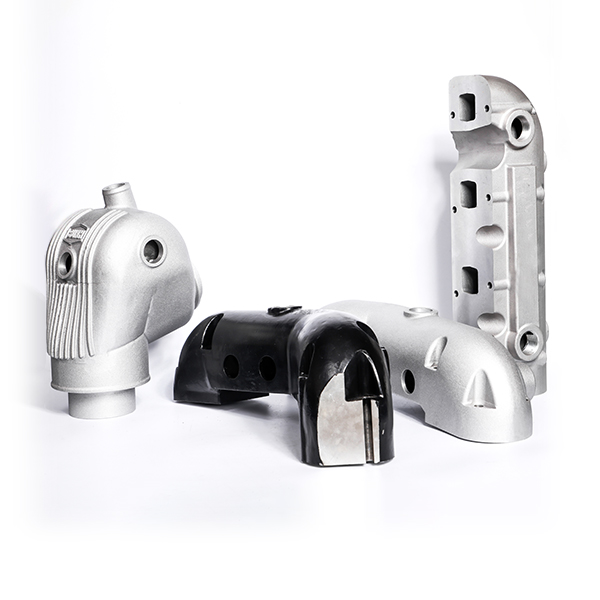Mobile:+86-311-808-126-83
Email:info@ydcastings.com
Aluminum Die Casting Mould Design and Manufacturing Techniques Explained
The Role of Aluminum Die Casting Moulds in Modern Manufacturing
Aluminum die casting is a highly efficient manufacturing process used to produce complex metal parts with high precision. The use of aluminum as a material for die casting has grown significantly due to its lightweight, corrosion-resistant properties, and ability to conduct heat and electricity effectively. At the heart of this manufacturing process is the die casting mould, which plays a critical role in shaping these components.
Understanding Die Casting Moulds
A die casting mould is a precision tool used to form molten aluminum into specific shapes and sizes. The mould consists of two main parts the cavity, which shapes the exterior of the part, and the core, which forms the interior features. The mould is typically made from high-quality steel alloys that can withstand extreme temperatures and pressures associated with the die casting process.
The design of the mould is crucial for ensuring high-quality production. It must facilitate efficient filling of molten aluminum, allow for proper cooling to solidify the metal, and provide easy ejection of the final product. Engineers and designers invest significant time and resources into optimizing mould designs to enhance productivity and part quality.
Benefits of Aluminum Die Casting
One of the primary advantages of aluminum die casting is its ability to produce lightweight components without compromising strength. Aluminum parts are about one-third the weight of iron or steel components, making them ideal for applications in the automotive, aerospace, and consumer goods industries. The lightweight nature of aluminum contributes to better fuel efficiency in vehicles and reduces the overall weight of products.
Furthermore, aluminum die casting offers exceptional dimensional accuracy and surface finish. This precision minimizes the need for additional machining, saving both time and costs in the manufacturing process. The production of thin-walled sections with complex geometries is also achievable, allowing manufacturers to innovate without the limitations of traditional manufacturing methods.
aluminum die casting mould

The Process of Aluminum Die Casting
The process begins with the creation of the mould, which is often designed using computer-aided design (CAD) software. Once the mould is completed, it is mounted onto a die casting machine. The molten aluminum, typically heated to around 700°C (1292°F), is injected into the cavity of the mould under high pressure. This process ensures that every detail of the mould is captured in the final product.
After the molten aluminum fills the mould, it is allowed to cool and solidify. The cooling time can vary depending on the complexity and thickness of the part, but it generally takes just a few seconds to a few minutes. Once solidified, the mould is opened, and the finished component is ejected. Any excess metal, known as flash, can be trimmed away, and the part may undergo further finishing processes such as machining, sanding, or surface treatment.
Innovations in Mould Technology
As the demand for aluminum die casting continues to rise, advancements in mould technology have emerged. Innovations such as 3D printing are beginning to revolutionize the way moulds are created. Rapid prototyping through additive manufacturing allows for faster iterations in mould design and reduces production lead times. This technology also enables the creation of more complex geometries that may not be feasible with traditional mould-making methods.
Additionally, the use of advanced cooling systems within die casting moulds can significantly improve cycle times. By optimizing the cooling process, manufacturers can increase production efficiency, reduce energy consumption, and enhance the quality of cast components.
Conclusion
In conclusion, aluminum die casting moulds are a vital component in the production of lightweight, high-strength parts across various industries. The precision and efficiency of the die casting process, coupled with the advantages of aluminum, facilitate the manufacturing of complex geometries while reducing costs and production times. As technology continues to advance, the future of aluminum die casting promises even greater improvements, paving the way for innovative applications and a more sustainable manufacturing landscape. The role of the mould in this process cannot be overstated, as it is the key to transforming molten metal into functional, high-quality components that meet the demanding needs of modern production.
-
Understanding Metal Casting TechniquesNewsApr.02,2025
-
Understanding Exhaust Manifolds for Enhanced Engine PerformanceNewsApr.02,2025
-
The World of Metal FabricationNewsApr.02,2025
-
Key Components for Pump and Turbo EfficiencyNewsApr.02,2025
-
Essential Tools for Automotive Maintenance and RepairNewsApr.02,2025
-
Durable Valve Components for Effective Water ManagementNewsApr.02,2025











